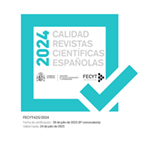Justicia y derechos de la infancia: el papel de la psicología moral en el discurso de la filosofía práctica
Resumen
La realización de la justicia para la infancia se encuentra con obstáculos específicos, no sólo debido a la naturaleza de los derechos y a las peculiaridades de la infancia como sujeto de derechos, sino también al conflicto de intereses entre objetivos a corto y largo plazo y las diferentes interpretaciones que un Estado puede hacer cuando trata con cuestiones sobre cómo materializar políticas de derechos sociales y cómo cumplir sus compromisos con la justicia social. Empezando por la cuestión sobre por qué los estados ricos no parecen estar suficientemente motivados para asumir de manera completa aquellos deberes de justicia hacia la infancia, derivados del reconocimiento de los derechos de esta, este artículo sugiere prestar atención a qué podría aportar la psicología de la motivación y la psicología moral en relación a los retos éticos y políticos actuales concernientes a la infancia. Así, se propone modificar y enriquecer el discurso filosófico con aquellos estrategias que desde las disciplinas citadas parecen tener un impacto más eficiente en la motivación de los agentes. Al hacer esto, la filosofía práctica se beneficiaría del intercambio entre disciplinas mejorando su papel a la hora de ayudar a entender y superar algunas tendencias acráticas.Descargas
Descarga artículo
Licencia
La revista Las Torres de Lucca. International Journal of Political Philosophy, para fomentar el intercambio global del conocimiento, facilita el acceso sin restricciones a sus contenidos desde el momento de su publicación en la presente edición electrónica, y por eso es una revista de acceso abierto. Los originales publicados en esta revista son propiedad de la Universidad Complutense de Madrid y es obligatorio citar su procedencia en cualquier reproducción total o parcial. Todos los contenidos se distribuyen bajo una licencia de uso y distribución Creative Commons Reconocimiento 4.0 (CC BY 4.0). Esta circunstancia ha de hacerse constar expresamente de esta forma cuando sea necesario. Puede consultar la versión informativa y el texto legal de la licencia.












